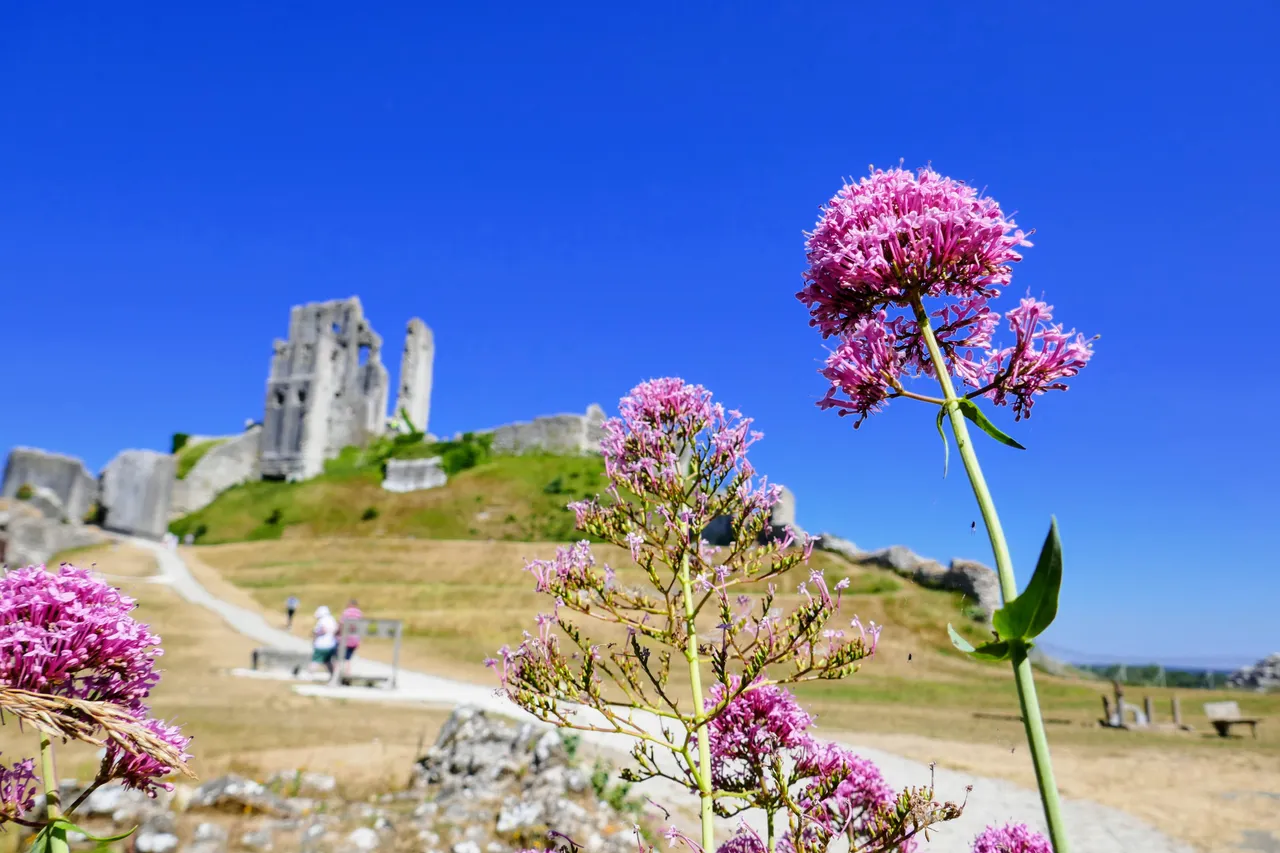
We all carry the scars time inflicts, physical and/or emotional. We have them or will have them. But is it time alone that inflicts those scars, or what we do with time? I'm more inclined to believe our actions often inflict the emotional and physical scars we carry and ofttimes the things we are surrounded by carry those scars also. This is certainly the case with the once mighty, and now broken and scarred, Corfe Castle.
“Scars have the strange power to remind us that our past is real.” - Cormac McCarthy (Author of one of my favourite books, The Road.)
This remnant from the past clings to the hilltop, its crumbling and decaying masonry a reminder of people long gone and their deeds, folly, success and failure.
Corfe Castle holds a commanding position. Even today in its ruined state, one can understand why William the Conqueror chose this location to construct one of the earliest examples of stone-built castles in England. It commands the gap in the Purbeck Hills between Wareham and Swanage and would have served as a powerful reminder of who was in charge...That is, whomever held the castle and had enough fighting men to sally forth in its defence.
Walking amongst its ruined walls, the grounds within the now destroyed battlements and outer walls, I was left with a sadness, a reminder that once mighty things, a castle of this size and strength, can crumble, along with the men and women who occupied it - [Because of them more accurately I guess.] Did I hear faint echoes of voices, the exultation of victorious fighting men celebrating a victory or the wails of those who perished in pain and hopelessness in the dank, dark dungeons? Maybe it was the whispers of servants going about their tasks, seemingly unseen in their duties amongst the high and mighty of the day, I heard on the wind? I can't say to be honest, however I felt something whilst strolling the remains of this once-great castle and it left me feeling sombre and wishing to see the castle in better days to chase away the ghosts whispers of past times.
Below I've elaborated on a few information boards one can find at the castle but like the castle itself the words are just a pale shadow of the history its walls have observed. I wonder what they would say, the walls, should they be able to speak. Would they whisper about the folly of men, the greed and hubris that surely destroyed those very walls? Would they speak of brave deeds, attackers and defenders both, throughout the many conflicts fought here; Or just the death and destruction the walls have both witnessed and suffered. In over 1000 years these walls have seen many things, good bad and indifferent I'm sure...And it all seems to have seeped into the very stone, the scattered, but stoic, remnants of the castle's former glory.
978 - King Edward the Martyr was murdered by his step mother Elfrida at the site of the Old Hall. He was apparently stabbed in the back by one of her retainers. (This was prior to the stone castle beginning construction.)
1086 - Corfe Castle began construction after William the Conqueror swapped a church in Gillingham for the land. The steep sides of the hill and approach made it a highly defensible position and perfect for such a castle.
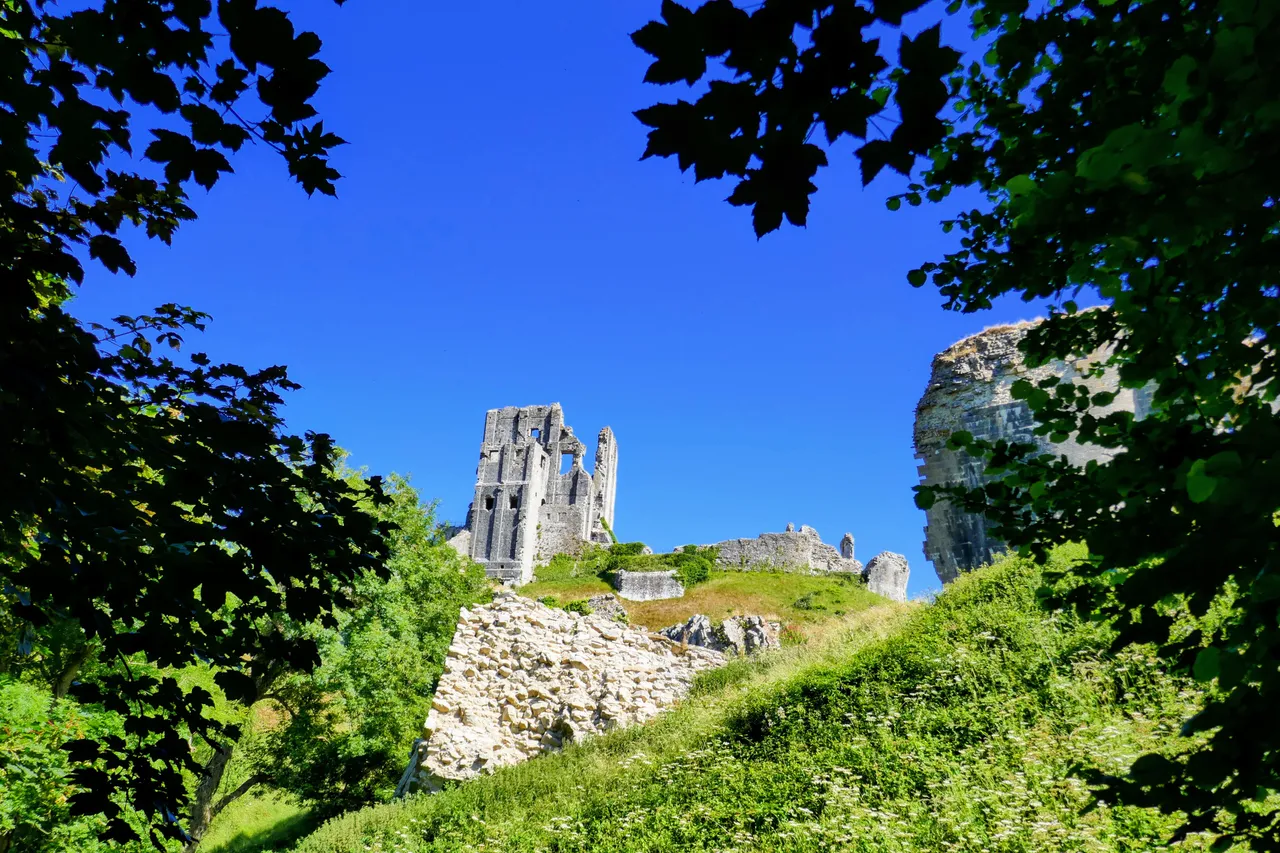

1106 - Robert Duke of Normandy - Robert Curthose (c. 1051 – 3 February 1134) was incarcerated in the keep by his younger brother Henry I after a battle between the two was won by the latter. Robert staged an ill-fated attempt and the throne of England which his brother held. Interestingly Robert was the eldest son of William the Conqueror but was at odds with his brothers in England.
1138 - Covetous of the throne of England Empress Matilda raised an army against her cousin King Stephen (Stephen of Blois). Stephen besieged one of her greatest supporters, Baldwin de Redvers at Corfe Castle. King Stephen's siege-castle was in a field just out of bow-shot of Corfe Castle and is today known as The Rings which is really only a series of earthen mounds where the siege-castle once stood.
1199-1214 - Princess Eleanor of Brittany, Pearl of Brittany, was imprisoned by her uncle King John as threat to the throne. Twenty two knights loyal to Princess Eleanor perished, starved to death in the dungeons below the castle, after being recaptured after an escape attempt. Eleanor died a nun in 1241 at the age of 57 or 59 (undetermined).
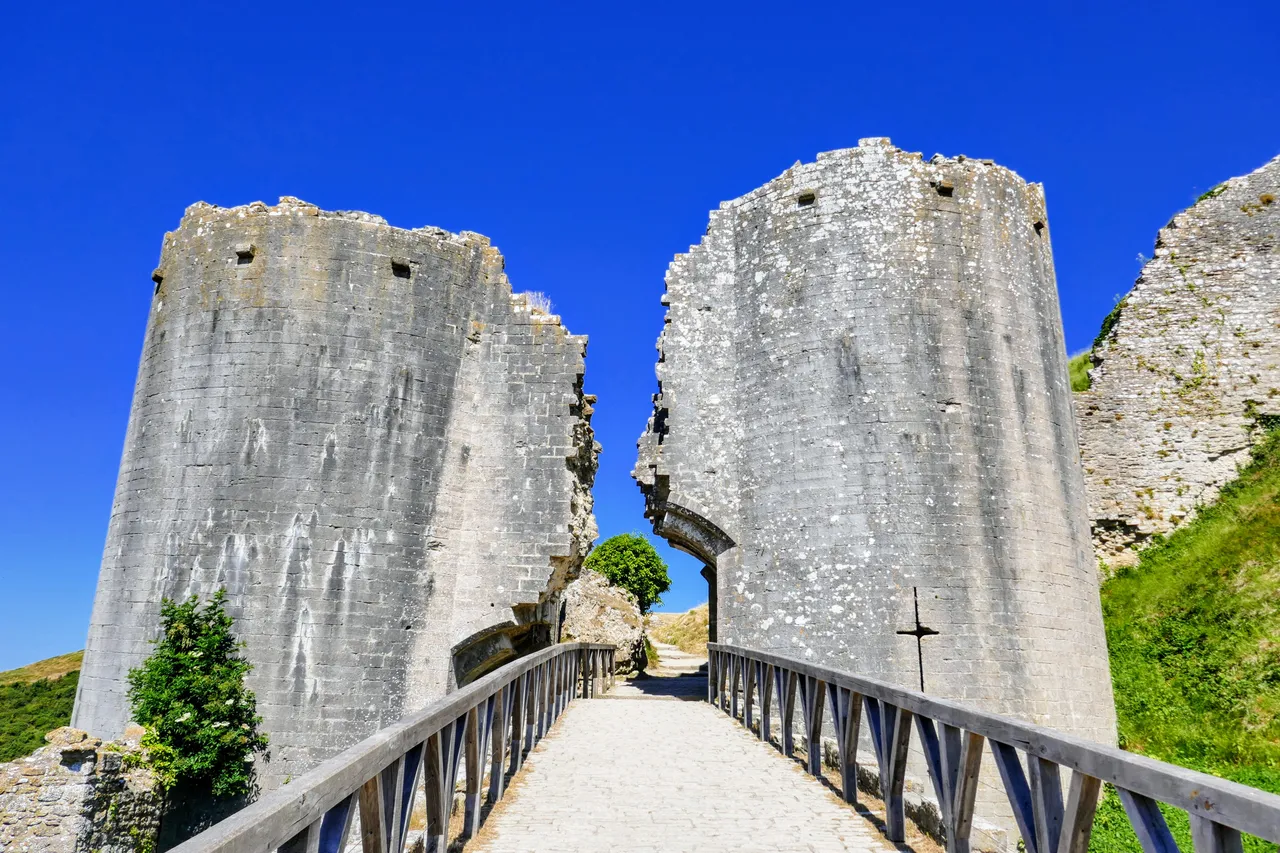
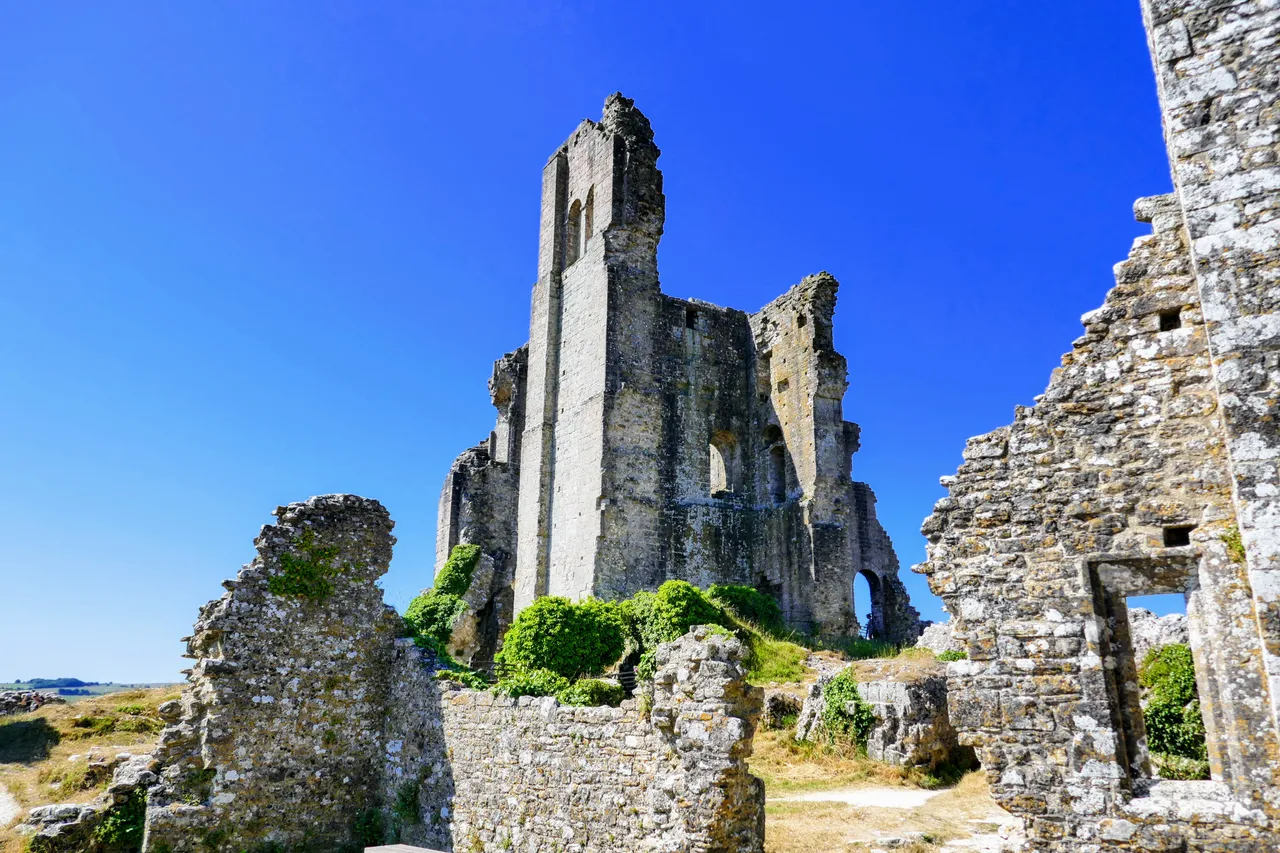
It's difficult to imagine the immense effort that would be required to destroy this castle. It was destroyed after it had been won away from the Royalists as it could never have been achieved during battle.
1220-1294 - A time of improvement and expansion when both Henry III and Edward I expanded and modernised the castle's defences including the addition of the South West gatehouse. Keep in mind the village of Corfe Castle lies right up to the outer-defensive walls so the castle would have been a bustling place with much going on at any given point.
1572 - Queen Elizabeth I (the last Royal owner of the castle) sold Corfe Castle to Sir Christopher Hatton, one of her favourites. The price £4,762...A relative bargain?
1635 - The castle was sold to Sir John Bankes, the Lord Chief Justice who had stayed loyal to King Charles during the Civil War whilst almost all of the rest of Dorset was held by the Parliamentarian forces.
1643-1646 - Two sieges were held off under the command of Dame Mary Bankes during the Civil War. She was betrayed from within eventually however was allowed to leave unharmed and with honour in recognition of her brave defence. She was also handed the keys to the castle to take with her.
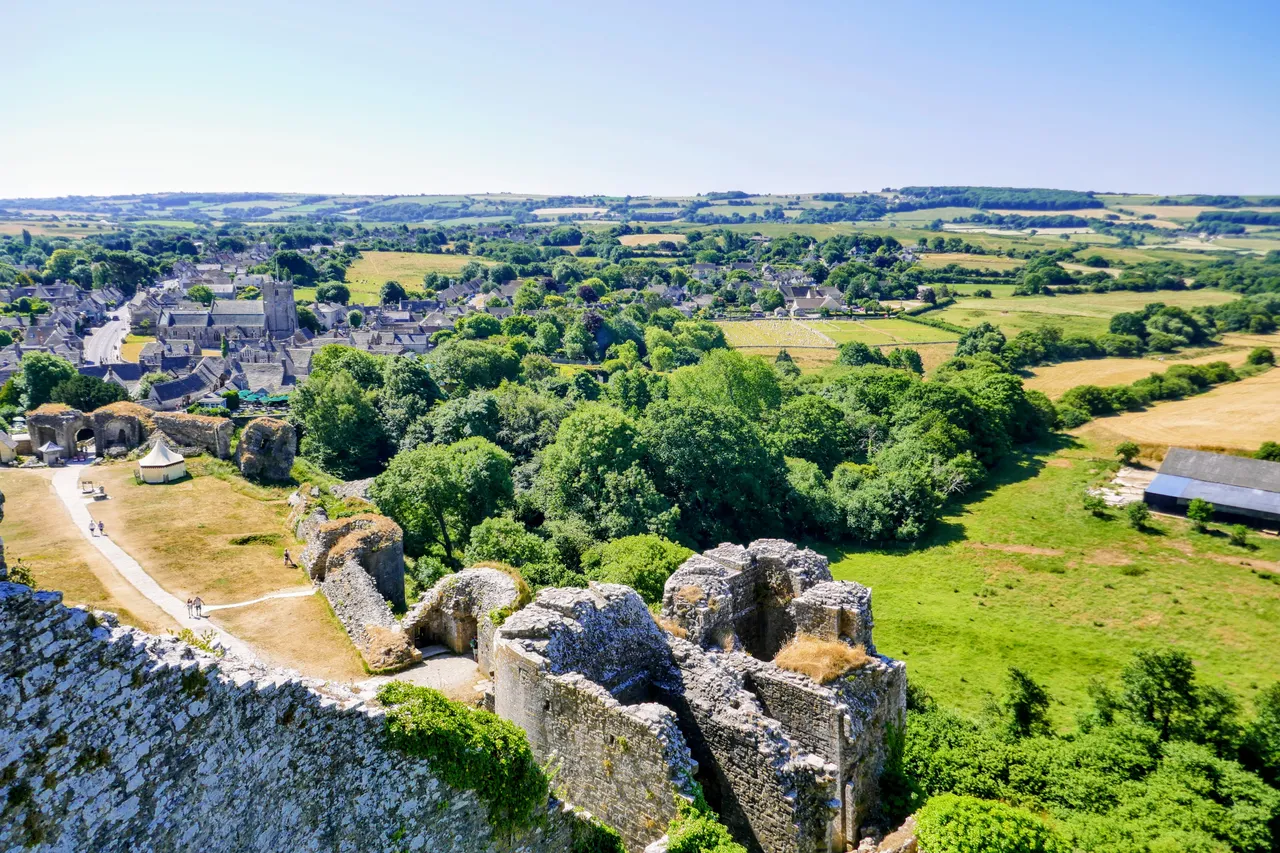
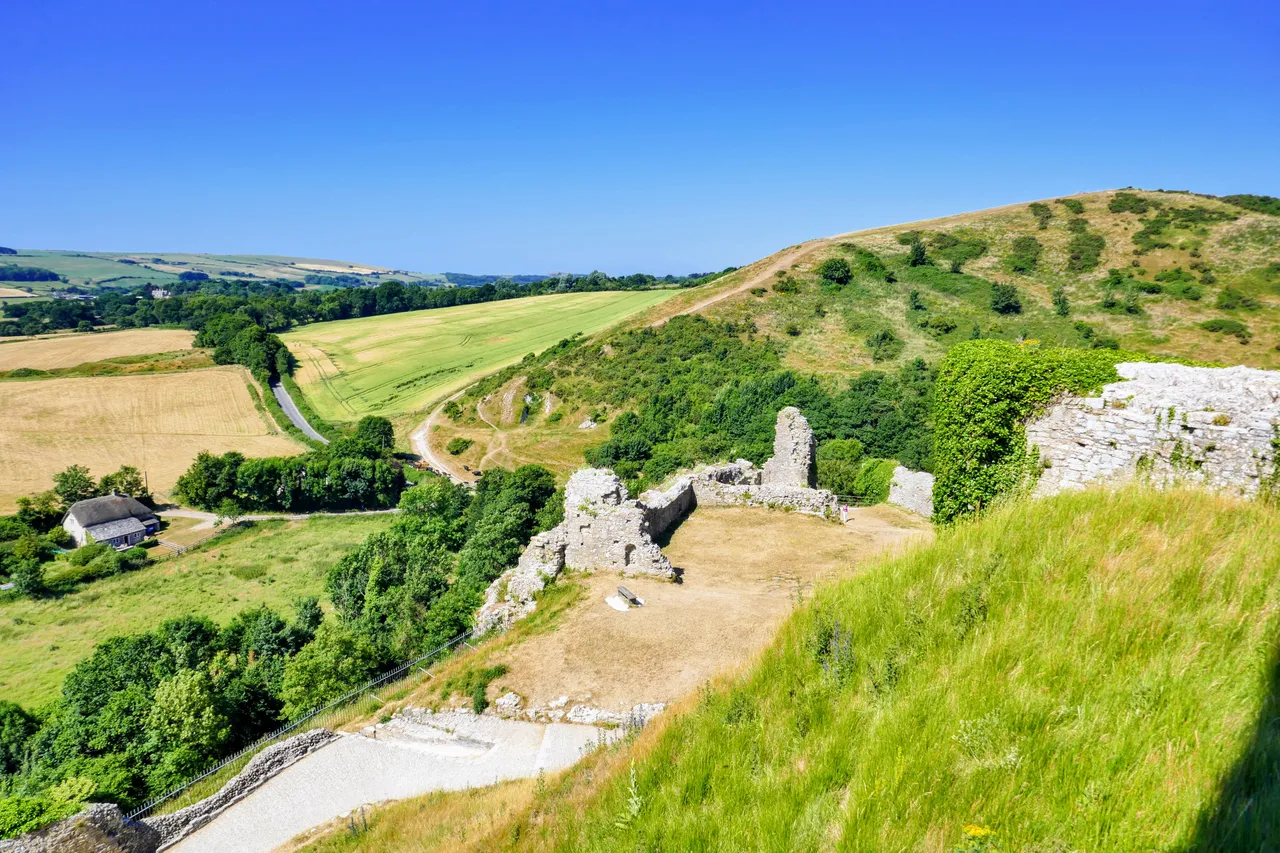
Standing within the broken structure, at ground level, one gains an understanding of the commanding view this castle held, and how it, and the garrison, would have held sway over the valley and lands below. You can see above how close the town come's to the castle's walls, also demonstrated by the map image below.
1646-1663 - Partial demolition by order of the Parliament. Lady Bankes' son Ralph attempted to recover what he could and later build a new mansion at Kingston Lacy near Wimborne where the Castle key's his mother was given can be viewed.
1982 - The Banke's family handed the castle to the National Trust after 350 years of ownership. The gift included countryside, coastline, farms, nature reserves and the mansion at Kingston Lacy. A most generous gift and one that allows people like you and I a chance to visit.
I loved my visit to Corfe Castle; I love history so it's no wonder. Walking up from the village through the massive towers where the original portcullis would have stood, now jagged and broken battlements like rotten teeth jutting from decayed gums, I could imagine what it might have been like many hundreds of years ago for those doing the same...The sounds and smells of castle-life reached my ears and I found myself wishing I could have seen it in its former glory. I'm glad I wasn't one of the many men who assaulted this castle as it would have been a brutal business, however I'm pleased that I can add my name to the long list of people who have been there in its thousand-plus years of history.
Its scarred and broken now however is still an amazing place to visit, a place one could wander in peace alone with one's thoughts, delve into its rich and brutal history or simply from which to take in the amazing views.
Getting there
We drove over from Weymouth, a 22 mile (35km) trip through lovely countryside via Wareham. There is no car parking up in the village, or very limited, so you're best to head to the Corfe Castle car park on the A351. There's a vistor centre there and plenty of metered car parking. Take a lovely walk (only 10 minutes) up to the castle along the Corfe River and through the countryside access used by thousands of visitors over a thousand years. This will bring you up into the edge of the village then take a left to the castle entrance. Trust me, you won't miss it.
My suggestion is to get there early, explore the castle and surrounds for a few hours or so, then head to Norden Station to catch the steam train to Swanage which is a lovely seaside town full of good places to eat. Have a wander, take some photos then head back to Norden Station to pick up your car. The other option is to go to Swanage and take the train to Corfe Castle and back. It's about £15 return for adults, £8 for kids and a family ticket is £39. We didn't do it that way as car parking in towns is costly and often not abundant.
What else is in the area
There's loads to do around this area but here's a few things we did, not all on the same day of course.
Tank Museum - Bovington
Swanage Railway - (Steam train)
Durdle Door
Lulworth Cove
Jurassic Coastal path
Cerne Abbas
There's so much to do though and I've only picked out a few things that we did over the several days we were in the area. we were based in Weymouth which gave us good access to both sides of that location.

This image of Corfe Castle from Wikipedia.

A wide snap showing the castle, town and surrounding area. You can see the car park I mentioned at top of snap.
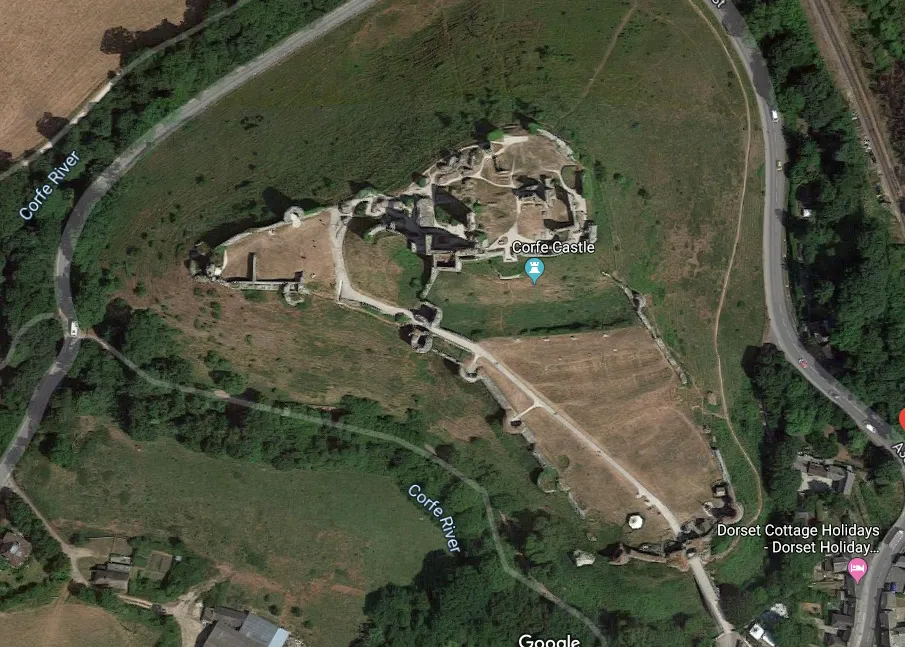
Google map imaging shows the scope of the castle and proximity to Corfe Castle (the village). Very steep slopes surround the castle on all sides with the village to the south leading to the main gates of the castle as pictured above in an earlier image...(The walkway leading to the two broken towers where the portcullis would have closed off the castle.)
Thanks for reading this far, if indeed you did, I know it's a lot of words, almost 2000 in fact. I hope you found it interesting and informative though. As an Aussie getting to places like this are rare...It's a long way and a lot of money to get to the UK however as a relatively young country we simply don't have the deep history found there and so we travel. I'd like to go back there to Corfe Castle someday and I think we will. For now I've got the memories and photos and that's enough.
Design and create your ideal life, don't live it by default
Discord: @galenkp#9209 🇦🇺 🇬🇧